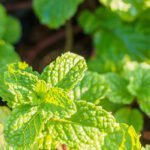Are you looking to create the best soil mix for vegetable gardens? Whether you’re a seasoned gardener or just starting out, understanding the importance of soil mix is essential for growing healthy and thriving vegetables.
The right soil composition is crucial for providing the necessary nutrients, water retention, and aeration that plants need to flourish. In this article, we will explore the basics of soil composition and what makes a good soil mix for vegetable gardens. We will also discuss the best soil amendments, the role of organic matter, and recommended soil mix recipes to help you achieve success in your vegetable garden.
By learning about different soil textures, organic matter, and best practices for soil preparation, we can create an optimal environment for our vegetables to thrive. With the right knowledge and techniques, we can ensure that our vegetable gardens are filled with nutrient-rich soil that promotes healthy growth and maximum yield. Let’s dive into how we can create the best soil mix for our vegetable gardens to set ourselves up for success.
The Basics of Soil Composition
When it comes to creating the best soil mix for vegetable gardens, understanding the basics of soil composition is essential. A good soil mix for vegetable gardens should provide the necessary nutrients, good drainage, and proper aeration for the plants to thrive. The key components of a good soil mix include organic matter, minerals, air, and water.
Organic Matter
Organic matter, such as compost and mulch, plays a crucial role in improving soil structure and fertility. It helps retain moisture, provides essential nutrients to plants, and encourages beneficial microbial activity in the soil. When preparing your soil mix for vegetable gardens, it is important to incorporate a generous amount of organic matter to ensure healthy plant growth.
Minerals
Minerals are another important component of soil composition. They provide essential nutrients like nitrogen, phosphorus, potassium, and other micronutrients that are vital for the growth and development of vegetables. A good soil mix should have a balance of these minerals to support healthy plant growth. Soil tests can help determine if any specific mineral amendments are needed for your vegetable garden.
Air and Water
A good soil mix should also provide adequate air and water to the plants’ roots. Proper drainage is essential to prevent waterlogging, which can lead to root rot and other issues. At the same time, the soil should be able to retain enough moisture for the plants to thrive. Balancing air and water in the soil mix is crucial for creating an optimal growing environment for vegetables.
Understanding these basic components of soil composition is crucial in creating the best soil mix for vegetable gardens. By ensuring a balanced blend of organic matter, minerals, air, and water in your soil mix, you can provide an ideal growing environment for your vegetables to flourish.
Best Soil Amendments for Vegetable Gardens
When it comes to creating the best soil mix for vegetable gardens, incorporating the right soil amendments is crucial. Soil amendments are added to improve the physical and chemical properties of the soil, creating a better environment for plant growth. Whether you’re dealing with heavy clay soil or sandy soil, adding the proper amendments can make a significant difference in the health and productivity of your vegetable garden.
Here are some of the best soil amendments to consider for improving soil quality in your vegetable garden:
- Compost: Compost is a nutrient-rich organic matter that improves soil structure, provides essential nutrients, and promotes beneficial microbial activity. Adding compost to your soil mix can enhance its water retention capacity and fertility.
- Manure: Well-rotted manure adds valuable organic matter to the soil, enriching it with essential nutrients such as nitrogen, phosphorus, and potassium. It also helps improve soil structure and microbial activity.
- Peat Moss: Peat moss is an excellent amendment for improving soil texture and moisture retention. It helps loosen compacted soils and aids in water and nutrient absorption.
- Worm Castings: Worm castings are rich in organic matter, beneficial microbes, and essential nutrients. They can enhance soil fertility, improve root development, and boost plant resistance to diseases.
Incorporating these amendments into your soil mix will not only address specific issues like poor drainage or nutrient deficiencies but also create a balanced and fertile growing medium for your vegetable plants. Experimenting with various combinations of these amendments can help you customize the soil mix according to the specific needs of different vegetables in your garden.
Remember that while adding these amendments is beneficial for improving overall soil quality, it’s important to regularly test your soil’s pH levels and nutrient content to ensure that it remains within optimal ranges for vegetable growth. By understanding how each amendment affects your soil composition, you can create the best possible environment for healthy and thriving vegetable plants in your garden.
Choosing the Right Soil Texture for Different Vegetables
When it comes to creating the best soil mix for vegetable gardens, understanding the needs of different plants is crucial. One important aspect to consider is the soil texture, as different vegetables have different preferences when it comes to the type of soil they thrive in. Here are some guidelines on choosing the right soil texture for different vegetables:
1. Sandy Soil: Some vegetables, such as carrots and radishes, prefer sandy soil due to its excellent drainage properties. Sandy soil allows water to pass through quickly, preventing these root vegetables from becoming waterlogged and prone to rot.
2. Loamy Soil: Many common vegetables, including tomatoes, peppers, and lettuce, thrive in loamy soil because of its balanced combination of sand, silt, and clay. This type of soil provides good drainage while retaining enough moisture and nutrients for healthy plant growth.
3. Clay Soil: While clay soil can present challenges due to its tendency to compact and drain poorly, certain vegetables like broccoli and cabbage can still do well in this type of soil with proper amendments and management. Adding organic matter such as compost can help improve clay soil structure and create a better environment for plant roots.
By understanding the specific needs of different vegetables in terms of soil texture, gardeners can tailor their soil mix accordingly to provide the best growing conditions for each crop. Whether it’s sandy, loamy, or clayey soil, with the right amendments and proper care, it’s possible to create an ideal growing environment for a wide variety of vegetables in the garden.
Soil Texture Considerations:
The Role of Organic Matter in Soil Mix for Vegetable Gardens
Organic matter plays a crucial role in creating the best soil mix for vegetable gardens. Compost and mulch are two important components that can make a significant difference in the overall health and fertility of the soil. Both of these organic materials contribute to improving soil structure, enhancing water retention, and providing essential nutrients for plant growth.
Compost: The Black Gold of Gardeners
Compost is often referred to as “black gold” by gardeners due to its remarkable ability to enrich the soil. Made from decomposed organic materials such as kitchen scraps, yard waste, and manure, compost is rich in essential nutrients like nitrogen, phosphorus, and potassium. It also helps to improve soil drainage and aeration, making it an ideal addition to any vegetable garden soil mix.
Mulch: Protecting and Nourishing the Soil
Mulch serves multiple purposes in a vegetable garden. By covering the soil surface, mulch helps to retain moisture, suppress weed growth, regulate soil temperature, and prevent erosion. Organic mulches like straw, wood chips, or shredded leaves gradually break down over time, adding valuable organic matter to the soil. This decomposition process not only nourishes the soil but also supports beneficial microorganisms that contribute to overall soil health.
Incorporating compost and mulch into your vegetable garden’s soil mix is essential for maintaining fertile and healthy growing conditions for your plants. These organic materials work together to improve nutrient availability, enhance water retention, support beneficial microbial activity, and create optimal conditions for robust plant growth. By understanding the role of organic matter in your soil mix and employing best practices for incorporating compost and mulch, you can create an environment that promotes thriving vegetable gardens.
Best Practices for Soil Preparation
When it comes to preparing the soil for your vegetable garden, there are several best practices that can help ensure optimal growth for your plants. One of the most crucial tips is to mix and aerate the soil properly before planting. This not only allows for better water and nutrient absorption but also creates a favorable environment for beneficial microorganisms that support plant growth.
To start, it’s important to remove any debris such as rocks, sticks, or large clumps from the soil. This will help create a smooth and even surface for planting. Once the soil is cleared of debris, it’s time to mix in organic matter such as compost or well-rotted manure. These natural amendments help improve soil structure, drainage, and fertility, creating a more hospitable environment for growing vegetables.
Aerating the soil is equally important for promoting healthy root development and overall plant growth. Aerating can be done using a garden fork or a tool specifically designed for this purpose.
By loosening compacted soil, you allow for better air circulation and root penetration, both of which are essential for optimal plant growth. Additionally, incorporating organic mulch into the top layer of soil can help with moisture retention and weed suppression while providing valuable nutrients as it breaks down over time.
| Soil Preparation Tips | Description |
|---|---|
| Remove debris | Clearing rocks, sticks, and large clumps from the soil to create an even surface. |
| Add organic matter | Mixing in compost or well-rotted manure to improve soil structure, drainage, and fertility. |
| Aerate the soil | Loosening compacted soil with a garden fork or specialized tool to promote better air circulation and root penetration. |
| Incorporate mulch | Adding organic mulch to the top layer of soil for moisture retention, weed suppression, and nutrient provision. |
Recommended Soil Mix Recipes for Vegetable Gardens
When it comes to creating the best soil mix for vegetable gardens, following recommended recipes is key to ensuring success in your gardening endeavors. The right soil mix will provide the necessary nutrients, aeration, and drainage for your plants to thrive and produce abundant yields. Here are some tried-and-tested formulas that you can use as a starting point for creating the ideal soil mix for your vegetable garden.
One popular soil mix recipe for vegetable gardens is the “Mel’s Mix,” popularized by Mel Bartholomew in his book “All New Square Foot Gardening.” This mix consists of 1/3 vermiculite, 1/3 peat moss, and 1/3 blended compost. The vermiculite provides excellent aeration and moisture retention, while peat moss improves water retention and acts as an organic amendment. Blended compost adds essential nutrients to the soil, enriching it for healthy plant growth.
Another recommended soil mix recipe is the “5-1-1 Mix,” which is particularly suitable for container gardening. This mix comprises 5 parts pine bark fines, 1 part perlite, and 1 part sphagnum peat moss. The pine bark fines provide structure and drainage, while perlite aids in aeration and prevents compaction. Sphagnum peat moss contributes to water retention and acts as an organic material to support microbial activity in the soil.
Lastly, the “Square Foot Garden Soil Mix” is also a popular choice among vegetable gardeners. This formula consists of equal parts of compost, coarse vermiculite, and coconut coir or peat moss. This mix ensures nutrient-rich soil with good drainage and moisture retention-a perfect combination for growing various vegetables effectively.
These recommended soil mix recipes have been proven to be effective for many vegetable gardeners across different regions. However, it’s important to note that individual plant needs may vary based on factors such as climate, temperature, and local soil conditions. It’s always a good practice to observe how your plants respond to the soil mix initially used so you can make adjustments accordingly.
| Soil Mix Recipe | Components |
|---|---|
| Mel’s Mix | 1/3 vermiculite, 1/3 peat moss, 1/3 blended compost |
| 5-1-1 Mix | 5 parts pine bark fines, 1 part perlite, 1 part sphagnum peat moss |
| Square Foot Garden Soil Mix | Equal parts compost, coarse vermiculite & coconut coir or peat moss |
Maintaining Healthy Soil
Once you have established the best soil mix for your vegetable garden, it’s important to focus on long-term soil care and nutrient management to ensure the health and productivity of your plants. One of the key factors in maintaining healthy soil is regular testing to monitor the pH levels, nutrient content, and overall quality of the soil.
By understanding these aspects, you can make informed decisions about what amendments or fertilizers may be necessary to maintain optimal growing conditions.
In addition to regular testing, it’s essential to practice good soil management techniques such as crop rotation, cover cropping, and minimal tillage. These practices help improve soil structure, reduce erosion, and maintain a balanced ecosystem within your garden. Crop rotation, in particular, is crucial for preventing nutrient depletion and minimizing the risk of disease and pest infestations. By rotating crops each season, you can effectively manage nutrient levels and promote a healthy balance within the soil.
Furthermore, proper nutrient management is essential for long-term soil care. While organic matter from compost and mulch plays a significant role in providing essential nutrients to the soil, additional fertilization may also be required.
It’s important to choose fertilizers that are specifically formulated for vegetable gardens and follow recommended application rates to avoid over-fertilization, which can lead to imbalanced soil nutrition. With careful monitoring and thoughtful management practices, you can maintain healthy soil for long-term growth and bountiful harvests.
By implementing these tips for long-term soil care and nutrient management into your gardening routine, you can ensure that your vegetable garden continues to thrive year after year. Whether it’s through regular testing, sustainable management practices, or conscientious nutrient management, maintaining healthy soil is key to creating an environment where your vegetables can flourish. With dedication and attention to detail, you can enjoy a productive vegetable garden that yields high-quality produce season after season.
Conclusion
In conclusion, creating the best soil mix for your vegetable garden is essential for the health and productivity of your plants. By understanding the basics of soil composition and the role of soil amendments, you can tailor your soil mix to meet the specific needs of different vegetables. Choosing the right texture and incorporating organic matter such as compost and mulch can also make a significant difference in the overall quality of your soil.
It’s important to follow best practices for soil preparation, including proper mixing and aeration, to ensure optimal growth for your vegetables. Experimenting with recommended soil mix recipes can also help you find a formula that works best for your specific garden and plant varieties. Additionally, maintaining healthy soil through long-term care and nutrient management is crucial for sustaining a thriving vegetable garden.
By putting all these elements together, you can create the best soil mix for your vegetable garden, setting the stage for successful cultivation and bountiful harvests. With the right combination of ingredients and ongoing attention to soil health, you can enjoy a flourishing vegetable garden year after year. Remember that every garden is unique, so don’t be afraid to experiment and make adjustments along the way to find what works best for you.

If you’re looking to get into vegetable gardening, or are just looking for some tips on how to make your current garden better, then you’ve come to the right place! My name is Ethel and I have been gardening for years. In this blog, I’m going to share with you some of my best tips on how to create a successful vegetable garden.





